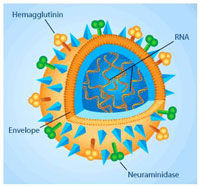Agilent Technologies, Shanghai Institute of Biological Sciences and Chinese Academy of Sciences Open Centre for Systems Biology
Agilent Technologies Inc. announced the opening of the Shanghai Institute of Biological Sciences (SIBS)-Agilent Centre for systems biology in Shanghai, China. The centre will feature multiple technology platforms in the areas of genomics, proteomics and metabolomics to conduct biomarker identification to better understand diseases.
“As a leading provider of bio-analytical instruments, Agilent is very proud to be collaborating with world-class life science researchers who are contributing to breakthrough research in China,” said Nick Roelofs, president of Agilent’s Life Sciences Group. “China has demonstrated tremendous progress in recent years in technological advancement and research capabilities and is a key focus area for Agilent’s Life Sciences Group.”
SIBS and Agilent signed an agreement in 2008 to establish the joint SIBS-Agilent Centre for System Biology. Initial work of SIBS researchers involved using Agilent chromatin immunoprecipitation-on-chip (ChIP-on-chip) and gene expression microarrays to study molecules known as “Yamanaka factors.” The research achieved new insight into how adult cells can be induced to act like embryonic stem cells (ESC), with the ability to form any type of tissue known as “pluripotency.” The findings were published in an article titled “Yamanaka factors critically regulate the developmental signalling network in mouse embryonic stem cells” (Cell Research, 2008 18:1177-1189).
“This is more than a simple technical collaboration. It is an opportunity for scientists in China to work together with a company providing advanced technologies,” said Prof. Wu Jiarui, vice president of SIBS and director of Key Laboratory of Systems Biology. “Agilent not only provides us with the technology tools, but we also look forward to close interaction with their scientists and the life science community in China. I am confident this collaboration will be a tremendous success.”
Topics
Organizations
Other news from the department science

Get the life science industry in your inbox
By submitting this form you agree that LUMITOS AG will send you the newsletter(s) selected above by email. Your data will not be passed on to third parties. Your data will be stored and processed in accordance with our data protection regulations. LUMITOS may contact you by email for the purpose of advertising or market and opinion surveys. You can revoke your consent at any time without giving reasons to LUMITOS AG, Ernst-Augustin-Str. 2, 12489 Berlin, Germany or by e-mail at revoke@lumitos.com with effect for the future. In addition, each email contains a link to unsubscribe from the corresponding newsletter.


















































